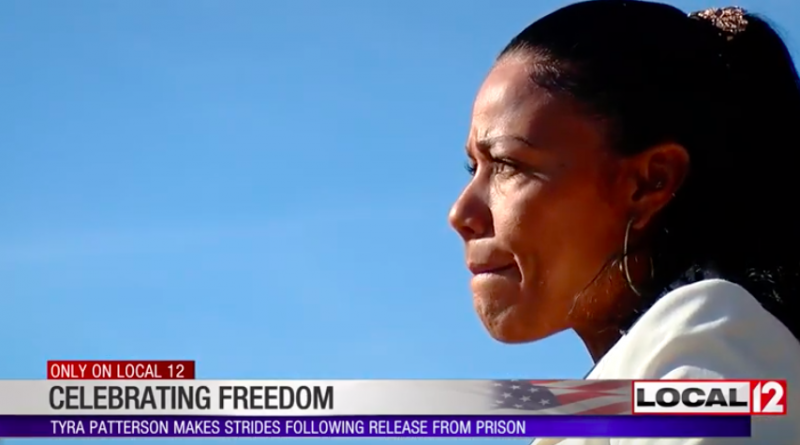Glass Half Full: Tyra Patterson’s Determination To Become A Positive Change After Wrongful Incarceration
Colleen McLaughlin
Contributing Writer
Screengrab from Cincinnati (WKRC) Local 12
Upon meeting Tyra Patterson, I could see that she is a product of her own making. Her warmth and down-to-earth personality have the ability to put a person at ease. This demeanor is unexpected considering all that she has been through. At age 19, a grade-school dropout, Patterson was sentenced 43 years to life for a crime that she did not commit.
According to the Guardian, on Sept. 20, 1994 in Dayton, Patterson found herself in an uncomfortable situation with a group of people she didn’t know well. They were harassing another group of young women, and Patterson knew it was not going to end well. She left the scene before anything dangerous happened, but picked up one of the girl’s necklaces that was lying on the ground before she left. While walking away from the confrontation, Patterson heard a gunshot and called 911.
Fifteen-year-old Michelle Lai was shot and killed.
By picking up the necklace, Patterson was connected to the murder. Under duress and after coercion, 19-year-old Patterson falsely confessed to grabbing the necklace off one of the girls, which resulted with the charge of “aggravated murder.” Patterson had become one of many who faced the issue of being treated as guilty until proven innocent rather than innocent until proven guilty.
For 23 years, Patterson endured the identity of Prisoner 037737 and hearing “Prisoners, it’s time for chow” every day. Released early on Christmas in 2017, Patterson had the chance at a new life. She now works at the Ohio Justice and Policy Center as a paralegal and community outreach director in Cincinnati. Despite the fact that her life was taken from her, she was determined to “never becoming a product of [her] environment.” Prison was not going transform her negatively.
While in prison, Patterson learned how to read and write. Now, she says that she uses her education and experience of dropping out of school to inform youth about the importance of education. She tells kids to “stay in school, stay around people who will challenge you, and graduate”. However, while education is important, she advises young people to “always be kind, because kindness will open doors that education can’t and won’t.”
After spending a short time with her, it is obvious that Patterson is passionate about using her first-hand knowledge of the legal system to teach law students, attorneys and public defenders how to humanize their clients. To be able to represent clients well and get important information, Patterson said that attorneys “need to be able to be vulnerable as well.”
Patterson advises to share personal stories and see them “as more than just a number.”
“It’s more than just a job; it’s someone’s life.”
To humanize people, we must see that they are human.
“We are all somebody’s neighbor,” Patterson shared. “The worst thing [somebody] has ever done should not define who they are.”
Patterson has gone through an indescribable experience, but she came out a changed woman who sees life as a glass half full. Her attitude has not been hardened by her circumstances, but instead she sees where help is needed in the world and continues to strive to be part of that change.
When she was released, her first reaction was to fall to the ground. She recalls, “Kissing the ground and giving thanks to God.” Instead of being angry for being wrongfully convicted, Patterson is grateful for the chance that she had while in prison to be educated. She is now able to use that education to help others who are less fortunate.
To help with her early release, Lai’s sister, who was present at the shooting, sent a letter to former Ohio Gov. John Kasich affirming Patterson’s innocence.
Patterson says that a lot of people ask her why she is not angry with her for not coming forward earlier.
“I am not the victim here…I am just grateful that she was brave enough to come forward when she did.”
Although Patterson speaks of having a positive attitude in life and making the best of situations, her work and actions speak even louder about how she lives a positive and grateful life. Thrown in the deep end of life, Patterson managed to teach herself how to not only swim, but also throw life lines out to her neighbors.

